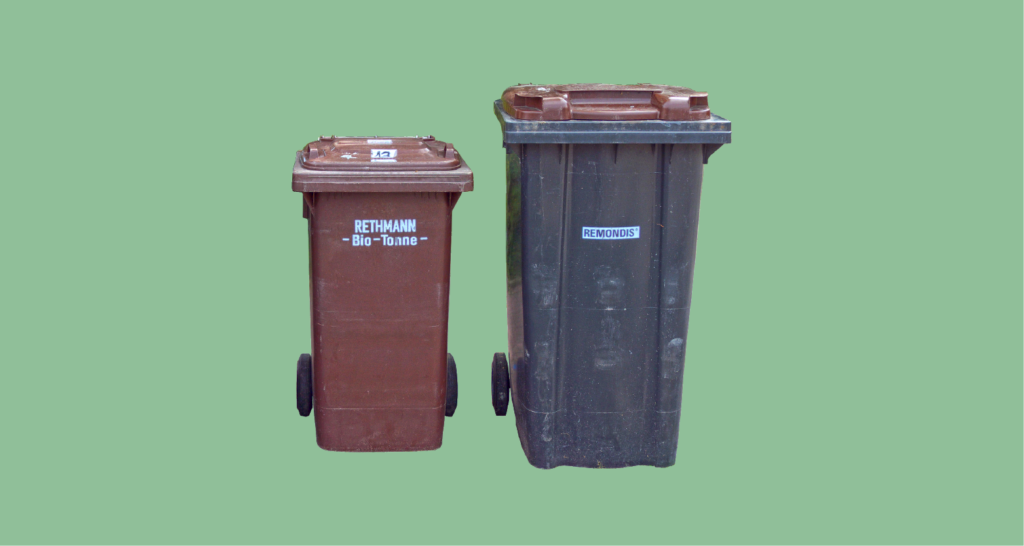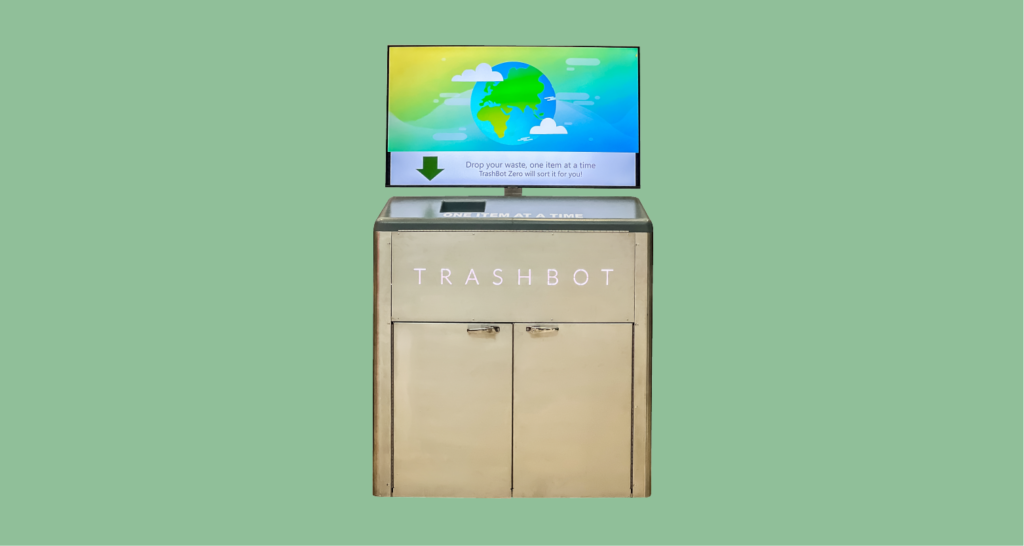Did you know that in the U.S. it is estimated that up to 25% of submitted items are unrecyclable? The inefficient recycling solutions to handle the world’s waste have led to air, water, and soil pollution, affecting our world’s sustainable growth. In addition, recent studies show that only 9% of plastic in the world actually gets recycled, these and more challenges make it harder for companies trying to shift towards a Zero Waste vision.
Only until smart tools such as smart recycling bins become an easy-access solution we will be able to replace the traditional ways of treating old and new waste problems, achieving truly sustainable and smart waste management.

Challenges with Traditional Recycling Bins
The vague information about recycling bins’ fullness indicates unproductive use of human resources, immoderate fuel consumption, time-wasting, and excessive use of resources, such as trash bags and cleaning chemicals. In addition, the absence of sensors made it challenging to identify any unusual incident (like fire or displacement). Consequently, few companies have started to test AI robotics to detect recyclable items.
Some of the most popular challenges faced with traditional trash bins are the following:
- Need for route optimization
- Detection of bin saturation
- Controlling the bin overflows
- Information about any unusual incident
- Recyclables contamination
- User diversion accuracy
Convention centers, buildings, stadiums, and transportation facilities are deploying new innovative solutions, such as CleanRobotics TrashBot™, a smart bin that captures high-quality waste data and informs staff when it gets full. TrashBot features an AI system that is three times more accurate at the point of disposal than human beings and conventional methods whose accuracy stands at 30%.
The global challenge to increase recycling rates is still hard to tackle with users’ uncertainty when deciding which items can be recycled and which cannot. Without proper user education, we can’t grow recycling rates and understand which type of recycling system is needed for a sustainable future. AI technology has been a breakthrough implementation in the recycling process, diverting recyclable items (aluminum, plastic, paper, glass, and more) from landfills.

What is a Smart Recycling Bin?
Smart waste management is the process of measuring, reducing, collecting, separating, and recycling trash using sensors and resilient devices to achieve efficiency, transparency, and sustainability.
A smart bin can leverage the use of technologies such as Artificial Intelligence of Things (AIoT), computer vision, robotics, RFID tags, Near Field Communications, sensors, Wireless Sensor Networks, compactors, actuators, Intelligent Monitoring Systems, and dashboards. The smart bin’s system works with artificial intelligence to divert trash with efficiency, cost-effectiveness, minimum labor-power, and least traffic congestion.
Smart bin TrashBot™ is integrated with a real-time monitoring dashboard that enables enterprises to gain insights into the overall recycling materials. The monitoring indicators allow the custodians to optimize their workflows and spend limited time while checking bins. Units can also perform waste audits, determine diversion rates, calculate potential cost savings through a smart bin analytics platform. Hence, users can maximize the recycling potential of materials through smart bins.
A smart bin is an amalgam of sensors, processors, and communication modules. The machine learning ability of smart trash bins works with real-time data collection, which is then transferred to the cloud platform through WiFi. The software on the cloud then processes the data and transmits it to the user interface for final reaction. It works as an IoT device to pick out and compress recyclable items spontaneously.
Smart bins make the complete waste management process convenient and efficient by combining the power of AI systems, robotics, and data processing. With AI and ML technology, smart bins can detect separate recyclables from landfills with 90% accuracy. It is also a more cost-effective (and smart) waste management approach than using expensive sensor instruments and human resources.
How do Smart Bins Work?
The sensor inside of the smart bin immediately recognizes when an item has been deposited. Through AI and Machine Learning, the recycling robot or smart bin will divert the items into their corresponding bin inside, assigning any contaminated items into the landfill bin.
The smart bin will also monitor the internal capacity and send a notification (such as SMS or email) for the custodial team’s action. Smart bin connectivity is possible thanks to a system of integrated devices, software, and a user interface, from collection to disposal of waste material.

Smart Recycling Bin Features
- AI-Powered Sorting: Consists of a sensor for object detection, a camera sensor for image recognition, and robotic technology for segregating recyclables from landfills. When an object enters a smart bin, the camera captures the object image for identification. The image is then identified and sorted against the entries in the database, whether it’s can, plastic, glass, or paper, and delivered in the respective section of the bin through robot automation.
- Built-in Display: The integrated screen enables users to add personalized content intermittently with educational content. Some facilities can also leverage the built-in display fot advertising material.
- Analytics Dashboard: An intuitive and user-friendly dashboard where users can monitor the bin’s capacity, track diversion rates, notice trends and make strategic decisions.
- Mobility: It is embedded with swivel lock wheels, helping users move on any hard surface, including a firm carpet.
- Sleek Design: Advanced recycling companies like CleanRobotics are deploying modern yet elegant design that not only provides high durability but comprises heavy-gauge stainless steel to prevent rust and corrosion, making them suitable for all environments.
TrashBot : A Complete Recycling Solution
With an uncontrollable amount of waste generated regularly, the job of separating the recyclable items from landfills is no more in the hands of human labor. An automated recycling solution, TrashBot, which replicates human actions, is needed.
TrashBot provides a complete solution enclosing all the mandatory features of a smart recycling bin. TrashBot is one of the top smart robot bins that generates waste diversion data of recyclable items from landfills. The critical system is constructed on a solid foundation of Artificial Intelligence, Machine Learning, computer vision, and robotics.
The sorting immediately begins as the item is discarded into the smart bin. Trashbot’s system leverages the use of robotics, computer vision, and AI to detect and separate recyclables from landfill items. Waste diversion is 3x more accurate than human beings, generating high-quality data and notifying the staff when it’s getting full. Cloud connectivity allows individual units to learn from the global TrashBot fleet, becoming more intelligent over time. It also has a large display for user education, corporate communications, and advertising.

TrashBot Adds Value Through AI and Reporting
- Large Capacity: The spacious design can accommodate enough garbage from crowded places like malls, transportation facilities and stadiums.
- Swift Working: TrashBot ensures the bright future of recycling, processing and diverting trash in seconds. Thus, TrashBot makes sorting for recycling much faster and more efficient than the manual work done by humans.
- Connectivity: The tasks done after the element sorting are also accomplished effectively with the help of sensors, and wireless connection to the Cloud platform. The notification that the bin is ready to be emptied can be updated on the Cloud and send a notification to the right person or team.
Proper recycling can only be accomplished with the appropriate discard of the trash. As humans fail in executing this duty, smart, automated bins like TrashBot can take over this job with 90% accuracy, efficiency, and acceleration.


